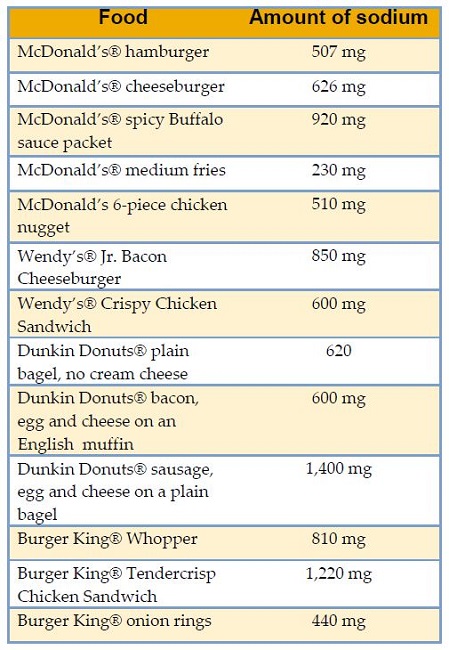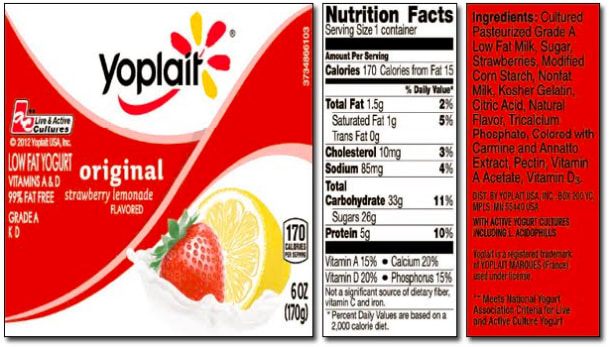41 reading labels for sodium
How to Read a Food Label to Limit Sodium: Care Instructions "Sodium-free" or "salt free" means a serving has less than 5 mg of sodium. "Low-sodium" or "low salt" means a serving has 140 mg or less of sodium. "Reduced-sodium," "lower in salt" or "lower in sodium" means that there is 25% less sodium than what the food normally has. This is still usually too much sodium. Don't be salty: Reading food labels can help you lower your sodium ... The researchers estimated sodium intake with 24-hour food recalls. They also asked people about how frequently they ate salty snacks/meals and their frequency of using food labels. The study revealed that people who routinely read food labels ate an average of 93 mg less sodium per day and were less likely to eat salty snacks compared to folks ...
Your Guide to the New Food Label | National Kidney Foundation Here is a list of ingredients to avoid when reading labels: chocolate and cocoa; cheese, milk, and cream; melon, oranges, coconuts, and bananas; molasses and peanut butter ... Keep an eye out for potassium chloride as it is a common ingredient in low sodium products. If listed, be aware that the food will have a high potassium content. Caution ...

Reading labels for sodium
Using the Nutrition Facts Table: % Daily Value eat less saturated and trans fats, less sodium and more fibre as part of a healthy lifestyle. Use the Nutrition Facts table and Eating Well with Canada’s Food Guide to make healthier food choices. 2 3 Nutrition Facts Per 9 crackers (23 g) Amount % Daily Value Calories 90 Fat 4.5 g 7 % Saturated 2.5 g 13 % + Trans 0 g Cholesterol 0 mg Sodium ... PDF Read the Nutrition Facts Label for Sodium! - NHLBI, NIH Sodium 125mg 5% Total Carbohydrate 9g 3% Dietary Fiber 3g 12% Sugars 4g Protein 2g Vitamin A 35% • Vitamin C 6% Calcium 2% • Iron 2% Read the Nutrition Facts Label for Sodium! Nutrition Facts labels tell you what you need to know about choosing foods that are lower in sodium. Here is a Nutrition Facts label for frozen peas and carrots ... How to Read Salt Labels | Cooking Light For the consumer, the tricky part is that there are four claims. Two apply when a company is comparing their food to a loosely defined fully salted version. One refers to a specific sodium level, another to whether salt has been added. Bottom line: The amount of sodium per serving (found on the back label) is critical.
Reading labels for sodium. How to Read Labels for a Low Sodium Diet - Salt Sanity Sodium Alginate You may find sodium alginate on the ingredient labels in dairy products like yogurt and ice cream where it's used as a stabilizer. It's used to thicken puddings and jams, prevent moisture loss in meats, and to emulsify salad dressings and beverages. Sodium Citrate Sodium & Your Heart Health: How To Read Nutrition Facts On Food Labels So, learning to limit sodium consumption by reading food labels is a smart way to stay heart-healthy. How much sodium is too much? While figures can vary across medical organizations, the average moderately active person should strive to consume 1,500mg and not exceed 2,300mg of sodium per day. But, very active people like competitive athletes ... Docusate Sodium - Uses, Side Effects, and More - WebMD Docusate Sodium - Uses, Side Effects, and More Common Brand(S): Col-Rite, Colace, Correctol, Diocto, Doc-Q-Lace, Docusoft, DSS, Silace, Surfak ... Reading Medicine Labels . How to make sense of ... PDF Reading Food Labels to Look for Sodium sodium-free, salt-free or no sodium less than 5 mg of sodium and no sodium chloride in ingredients very low sodium 35 mg or less of sodium no added salt or unsalted no salt added to the product during processing (this is not a sodium-free product) low sodium 140 mg or less of sodium reduced or less sodium at least 25 percent less sodium than the …
Reading Labels - World Action on Salt & Health Some food labels may only state the sodium content. To convert sodium to salt, you need to multiply the amount by 2.5. For example, 1g of sodium per 100g = 2.5 grams of salt per 100g You then need to know the weight of the serving portion in grams e.g. 30g Then divide the concentration of salt per 100g by 100 and multiply by the serving size. Sodium and Food Labels | Sutter Health It's important to note that all nutritional labels list amounts of nutrients per serving. This item, for example, lists 16 servings in the entire container. The sodium level is 120 mg for one serving. That means if you drink the entire container, you'll get 1,920 mg sodium! That could be a critical error if you're not careful. Understanding food labels - Canada.ca Food labels, nutrition facts tables, serving size, ingredients, % daily value, nutrition claims. Services and information. ... Meaning of fat-free, no added sugar, low sodium, other nutrient content claims. Percent daily value. How to calculate % daily value on a nutrition facts table, how to use % daily value. About food labels. Reading food labels: Tips if you have diabetes - Mayo Clinic Look for foods with fats, cholesterol and sodium on the low end of the Daily Value; keep fiber, vitamins and minerals on the high end. If your doctor or registered dietitian recommends more or less than 2,000 calories a day, you may need to adjust the percentage accordingly — or simply use the percentage as a general frame of reference.
Sodium: MedlinePlus Apr 02, 2015 · That equals about 1 teaspoon of table salt a day. Some people are more sensitive to the effects of salt than others and should eat less. This includes people who have high blood pressure, diabetes, or kidney problems, or are African American or over age 50. Reading food labels can help you see how much sodium is in prepared foods. Understanding Food Nutrition Labels | American Heart Association 1 - Start with the serving information at the top. This will tell you the size of a single serving and the total number of servings per container (package). 2 - Next, check total calories per serving and container. Pay attention to the calories per serving and how many calories you're really consuming if you eat the whole package. PDF Reading Food Labels for Sodium (Salt) - Western Health Reading Food Labels for Sodium (Salt) You will find the Nutrition Facts box on most packaged food products. The Percent Daily ... What the Label Says What it Means Free of sodium or salt - "salt-free", "without salt", "contains no sodium" Contains less than 5 mg of sodium or salt per What Sodium Labels Mean: A Guide to Decoding Sodium Labels Reduced (or Less) Sodium: This label means that the sodium level in the product has been reduced by 25 percent per serving from the original or a competitor's product. And if that product started with over 500mg sodium per serving, then you're still talking about 375mg of sodium per serving.
PDF Controlling Sodium and Reading Labels When You Shop foods when possible. When selecting processed items, read labels to limit the sodium from food and beverages. A low-sodium nutrition plan usually limits dietary sodium to 1,500-2,000 milligrams (mg) per day. Select more 'Low Sodium' foods with 140 mg of sodium or less per serving and limit 'High Sodium' foods with more than 300 mg of ...
What Is Sodium C14-16 Olefin Sulfonate? | NaturallyCurly.com Jul 11, 2018 · Sodium C14-16 olefin sulfonate may have a drying effect on one’s scalp and hair but if in need of a strong cleanser to remove buildup or dirt, then this agent may be the one for you. It is a safe and excellent surfactant to use and here are some products that have sodium C14-16 olefin sulfonate is formulated in.
Label Reading for Sodium - Kidney Community Kitchen So if a product has 10% sodium - you should count it as 15%. If a product has 8% sodium you should count it as 12%. This is probably the quickest way to convert when reading a label. It will give you a percentage of a 1600mg sodium per day diet - which is a whole lot better than 2400mg. Here's a simple chart:


Post a Comment for "41 reading labels for sodium"